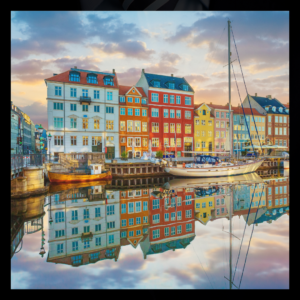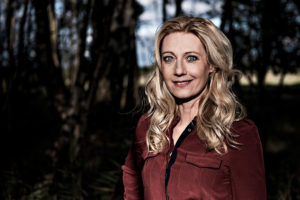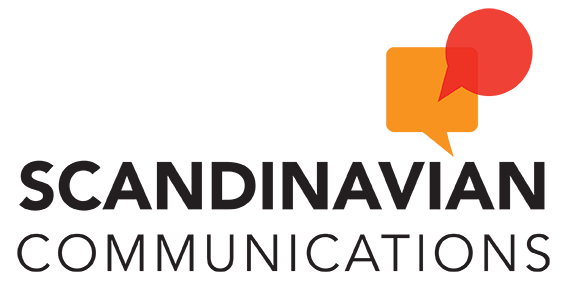
By Christina Rytter, Founder & Trusted Communications Advisor,
Scandinavian Communications
Business environment in Denmark
Denmark has earned a position as a global leader in innovation due to its different business environment and culture. Today Denmark is particularly strong in information technology, renewable energy, sustainability, and life sciences – and also has a vibrant creative industry, encompassing design, fashion, architecture, and media. Copenhagen, the capital city, is considered a global hub for green technology, design and innovation, offering numerous opportunities for creative entrepreneurs and businesses.
So, what drives the high level of innovation in Denmark?
First of all, the Danish business environment is characterized by a very high degree of trust and an easy-going Danish business culture with flat organizational structures. The focus on reducing the levels of management and hierarchy and decentralizing decision-making in Danish companies creates an innovative business environment with increased openness, trust, creativity, and faster decision-making. Also, with a focus on work-life balance, with a quite high degree of personal freedom for employees and as the latest trend coming up in Denmark “The 4-day work week” where leading private companies has shown how to reduce the traditional 5-day work week and increase business results at the same time.
Business-friendly ecosystem
Secondly, alongside the economic stability in Denmark the country has a thriving startup ecosystem with a network of incubators, accelerators, and venture capital firms. As well as a business-friendly Danish regulatory environment with straightforward procedures for starting a business, enforcing contracts and obtaining permits. The Danish government also has implemented various reforms to reduce bureaucracy and enhance the competitiveness of the Danish business sector as well.
Denmark has a high GDP per capita, and high standard of living and is along with other Scandinavian countries often associated with the Nordic Model – which combines free-market capitalism with a strong welfare state and social safety. Danes – alongside other Scandinavians – have a quite strong buying power, which is why many international companies find the Scandinavian markets quite interesting.
Technology and green economy drives business opportunities
Denmark is committed to reducing its carbon footprint and transitioning to a green economy. This creates significant business opportunities within cleantech and the renewable energy sector, including wind, solar and biomass energy.
Biotechnology and Life Sciences is other sectors where Denmark today has a strong reputation, with a focus on research and development as well as clinical trials and production. Denmark is home to several world-leading pharmaceutical and biotech companies, as well as research institutions and universities.
Communications, media and PR market in Denmark
Denmark has a strong tradition of public service broadcasting with DR (the Danish Broadcasting Corporation) being the primary public broadcaster together with partly public service broadcaster TV2. Especially DR offers a wide range of non-commercial television, radio and online content, catering to diverse audience and providing high-quality news, entertainment and educational programming.
In general Denmark has a very narrow media structure with only a few media in each category. To get through all communications must therefore be tailored very specific to the relevant audience and media – and followed up in person. In Denmark it’s quality over quantity and establishment of thought leadership working in both traditional and social media is key to create awareness in the Danish market.
While the circulation of newspapers has declined in recent years, print media still plays an important role in the Danish media landscape. Leading newspapers includes Berlingske Tidende, Politiken and Jyllands-Posten as well as leading daily business paper Børsen, which all provide comprehensive coverage of national and international news, business and culture. Of course all papers are digital as well and the Danish media landscape, meanwhile, is also evolving with the fast digitalization of content consumption and the ever-growing influence of social media. Businesses looking to establish a presence in Denmark should consider these factors and leverage the diverse media platforms available to reach their target audiences effectively. Don’t expect to get any control over the final journalistic content in articles! Danish journalists and media are very Independent – it’s just part of their DNA and the Danish and Scandinavian culture.
Top 3 advice for foreign companies to navigate Danish media
1. Write real journalistic content
Think through and create a real journalistic story from scratch for the Danish market – and then get your corporate or product messages to fit with a downplayed balance. Always work with a journalistic approach in your PR Press kit for Scandinavian media. A Marketing approach towards Danish Tier 1 media is a sure dead end – and your press release will easily end up in the garbage can at the newsdesk.
2. Find the Danish angel
Write a local angled story for the Danish market. Your PR core story for Scandinavia can be the same – but to really get it right, you then need to work out a local PR angle for Denmark as well. Understanding and acting on the small cultural differences between each Scandinavian market give you much greater PR results.
Work out a tailored media list with key journalists from Tier 1 media depending on your target group. Pick a broader range of media to get more volume, when you send out your press release – Denmark has a very narrow media structure with only a few media in each category.
3. Offer exclusivity & follow up
Work with exclusive sell-in of your press release / PR story. This means that you only talk in person with one leading key media at the time. It’s key for most Danish journalists to get their own stories with a unique angle. When you succeed with your PR sell-in. Wait for the agreed publication – and then go for a wide distribution of the press release to create a 2-waved PR effect. This can be very efficient!
Take into your planning that different Danish media work with very different timing. If you go for a business daily, you might only need to approach the editor a couple of weeks before you like to see some media coverage. But if it’s a high-end lifestyle Magazine in print, you might need to talk to the editor 3-4 months ahead. Follow up with journalists in person by phone and email to secure the sell-in of the story and final media coverage. In Denmark, this is a very delicate balance between being proactive without being annoying for journalists, who have a very busy and tight work schedule and a lot of people approaching them every day.
Most popular social media channels in Denmark
Facebook: 3,9 million users (67% of population) 2022 / 86% in 2023
YouTube: 2,8 million users (48% of population) 2022
Instagram: 2,6 million users (45% of population) 2022
LinkedIn: 2,4 million users (41% of population) 2022
SnapChat: 1,9 million users (33% of population) 2022
X: 1,2 million users (21% of population) 2022
TikTok: 1,1 million users (19% of population) 2022
Pinterest: 0,9 million users (16% of population) 2022
Reddit: 0,6 million users (10% of population) 2022
Twitch: 0,5 million users (9% of population) 2022
Source: Statista 2022
Most important international events in Denmark in 2024
Folkemøde: Citizens and decision-makers meet up in a three-day event to engage in dialogue and strengthen the Danish democracy. Folkemøde is created in cooperation with political parties, grassroots and different associations and companies.
Roskilde Festival: The Roskilde Festival is one of the largest music festivals in Europe and is known for its diverse lineup and cultural significance – the last year also been a test center for green start-ups testing their products.
Copenhagen Jazz Festival: The Copenhagen Jazz Festival is one of the largest jazz festivals in Europe and is a significant cultural event for Denmark.
Copenhagen Pride: The annual Copenhagen Pride Week is a celebration of the LGBTQIA+ community in the shape of a human rights festival with safe spaces and an environment where people are free to express themselves.
Denmark in Numbers*
Population: 5,8 million (2022)
Languages spoken (official)Danish
Religions (% of population)Evangelical Lutheran: 75%. Other Protestant and Roman Catholic: 10%. Other: 15%
GDP per capita (in USD)$63,000 (2021)
(Real) GDP growth rate (%) 2,8 % (2021)
Inflation rate (%) 0,8 % (2021)
Unemployment rate (%) 4 % (2021)
Key sectors and industries (% of GDP) Service sector: 75%. Industry: 21%.
Agriculture and fisheries: 3% (2021)
Mobile penetration (X per 100 people) 120 (2021)
Internet users (% of population) 96% (2021)
Corporate profit tax: (%) 22% (year – latest available)
Rate of consumer tax or VAT: (%) 25% (year – latest available)
* World Bank, Statistics Denmark, Pew Research Center and PwC
###
Do you need a single point of contact to Scandinavia?
Don’t hesitate to contact:
Christina Rytter, Founder & Trusted Communications Advisor
Scandinavian Communications
Email: cr@scandcomm.com
Mobile: +4523967733
About Christina Rytter

Christina Rytter is a dedicated Danish and international Trusted Communications Advisor and Founder of Scandinavian Communications. She has 25 years of hands-on experience with strategic communications, public relations, crisis and change communications, C-level leader training, digital marketing, social media and sales. So far she has been external advisor and Key Account Director for +600 international and Danish clients. She is also a former TV host and experienced entrepreneur responsible for start-up and business development of four international companies – two of them as founder. Also, she coach business owners of funded front-runner companies under the European Commission.
Last but not least Christina Rytter is Past-President and Chair in Public Relations Global network, where she currently holds the position as Vice President EMEA and is part of the Executive Committee and Advisory Board.
